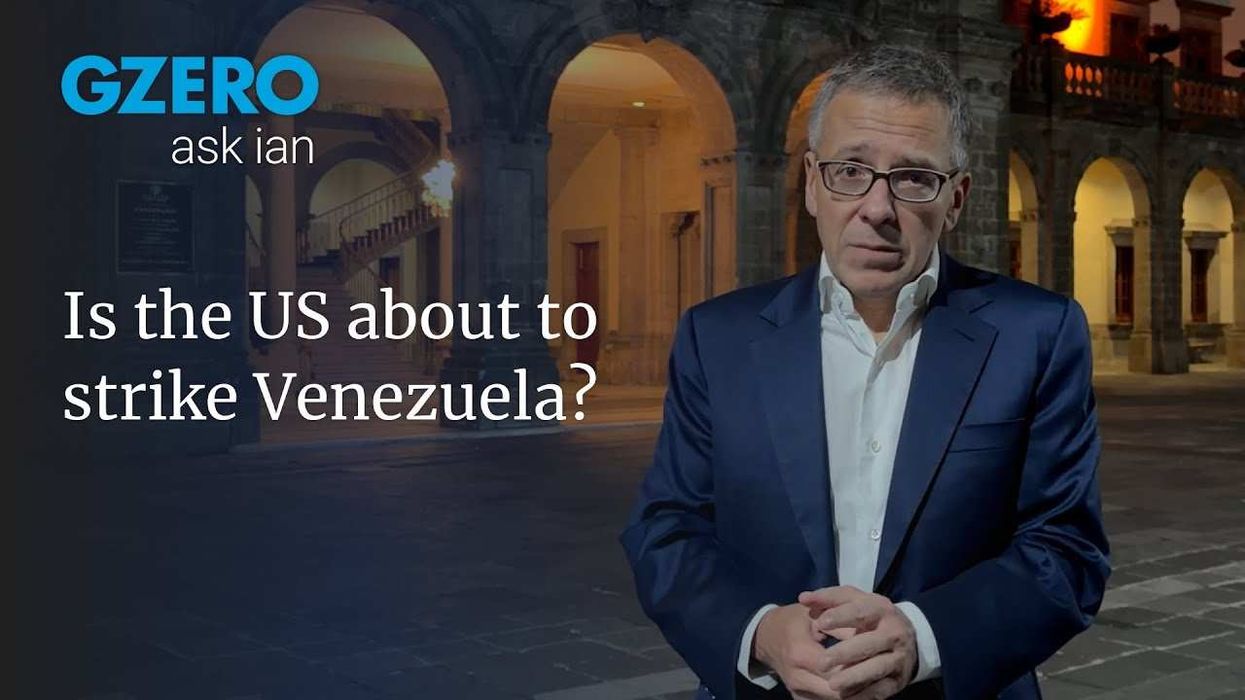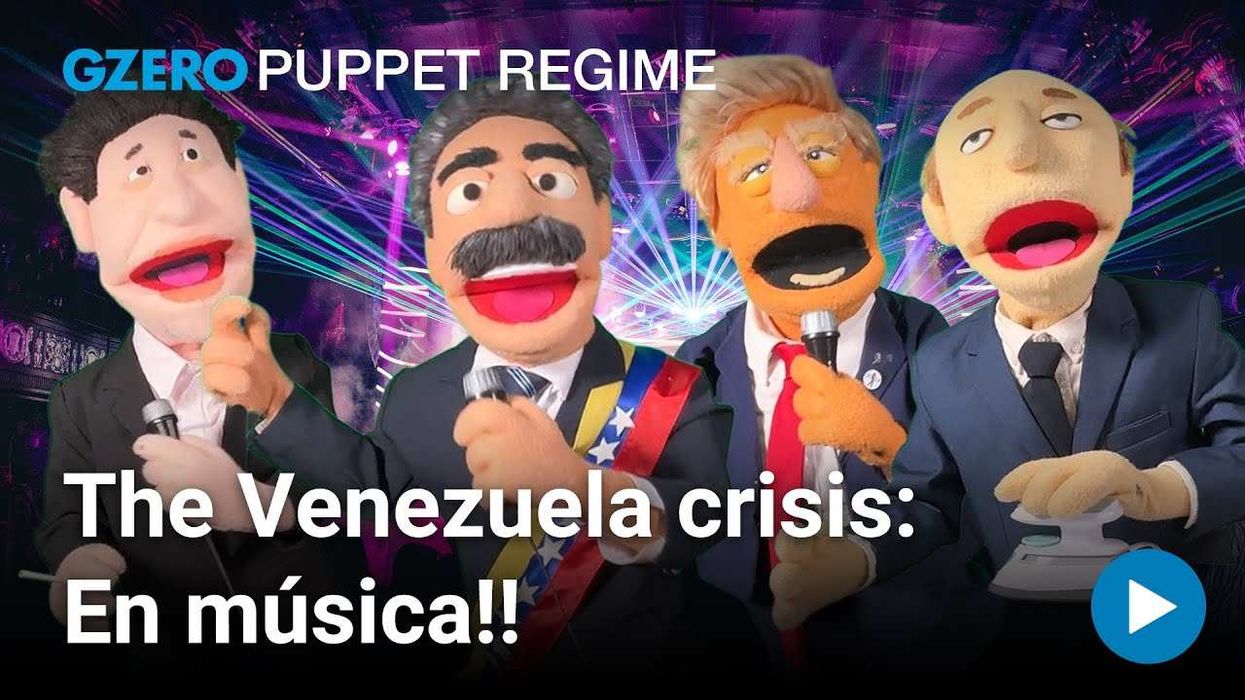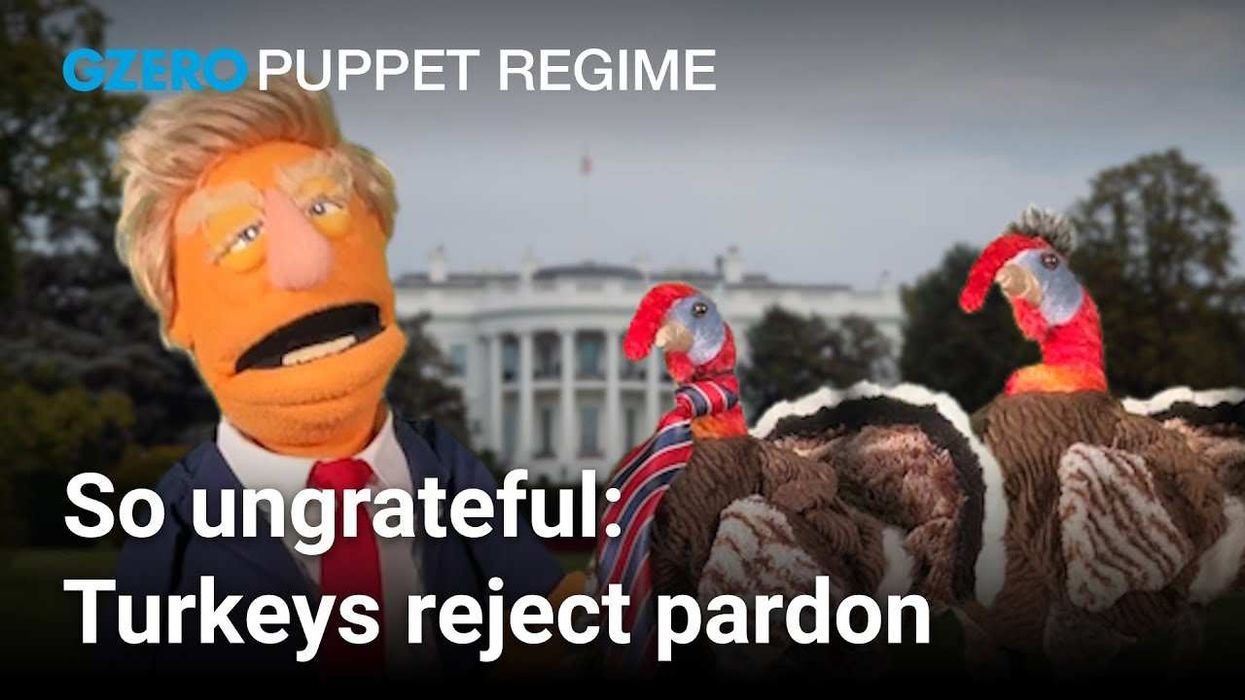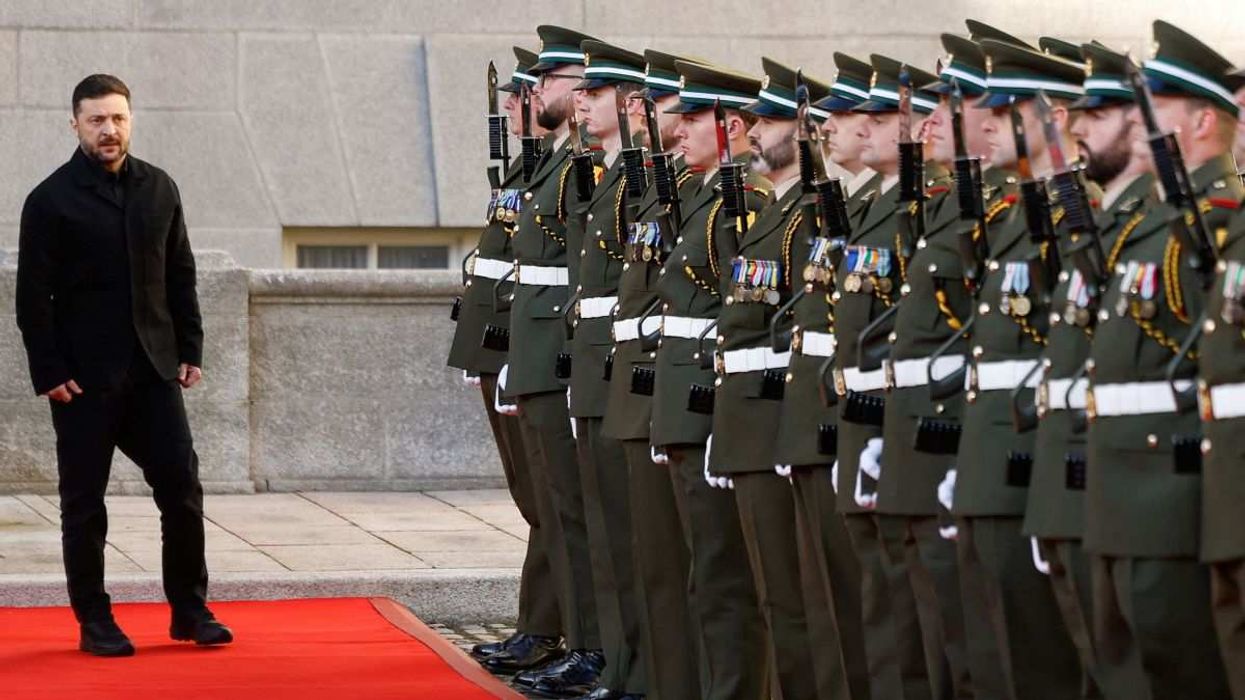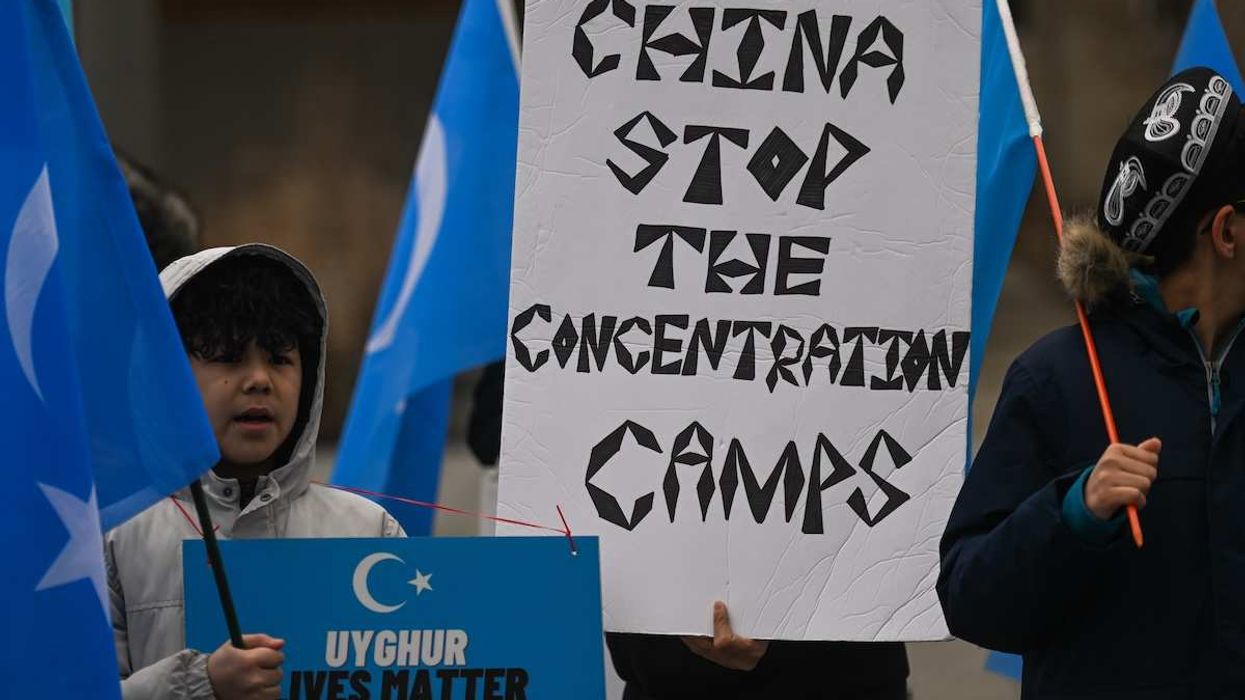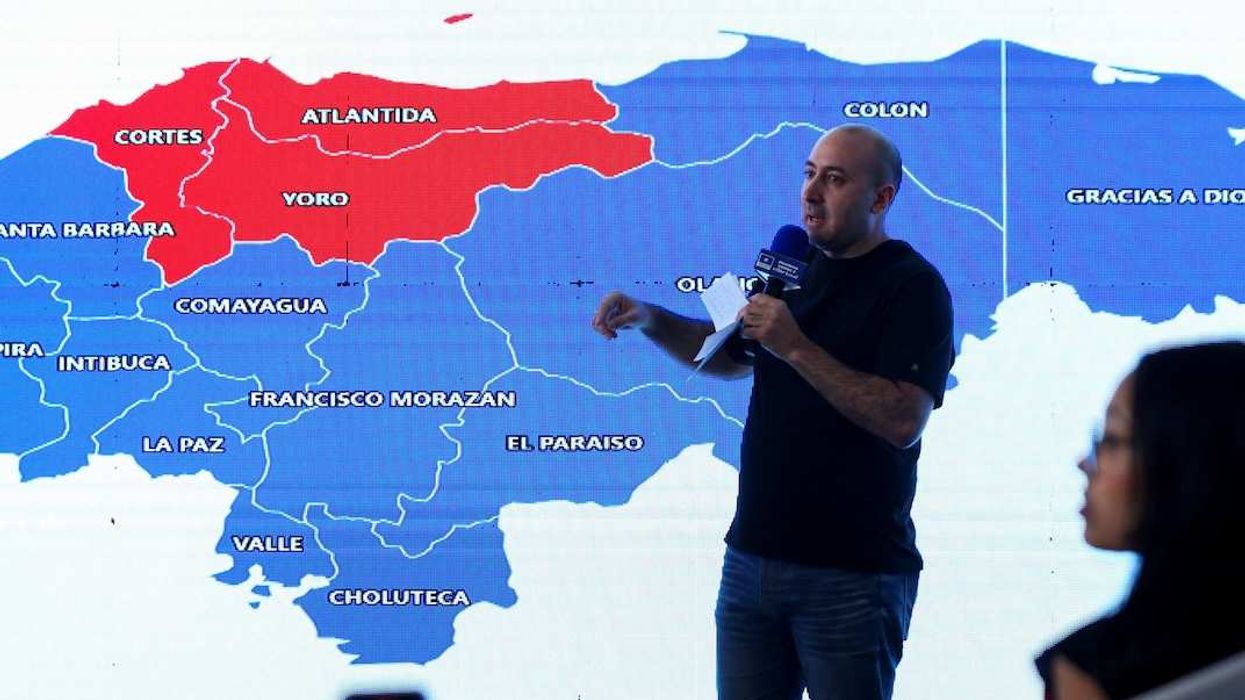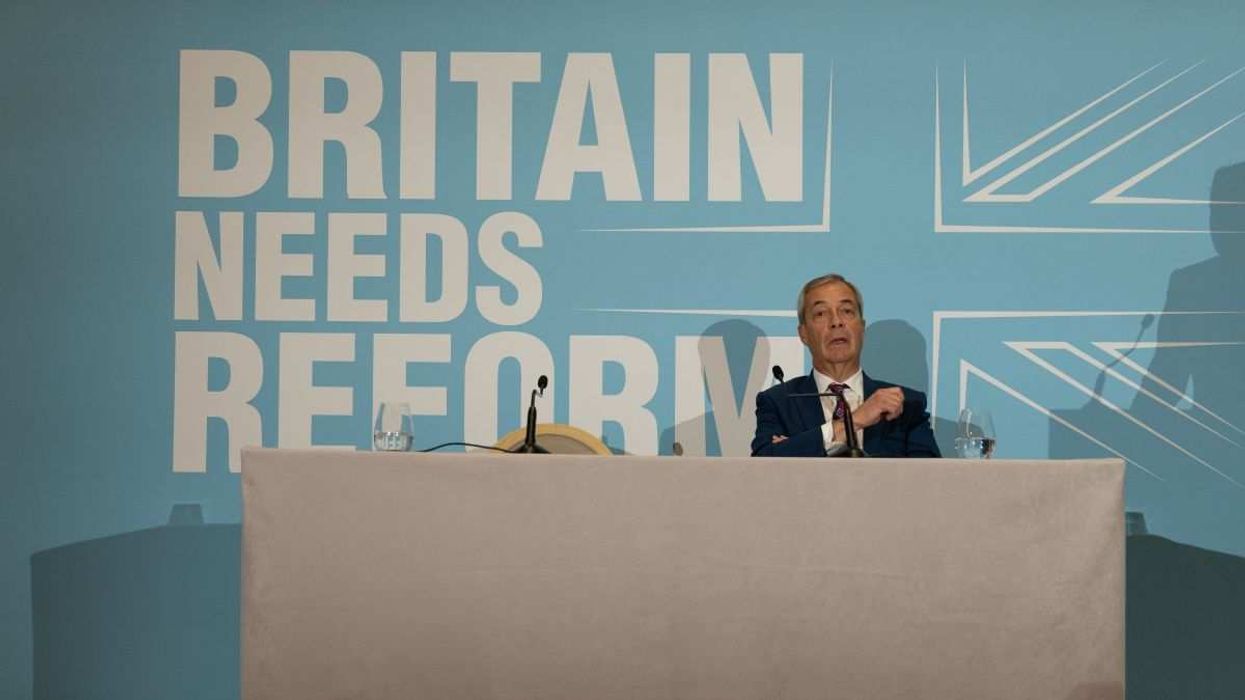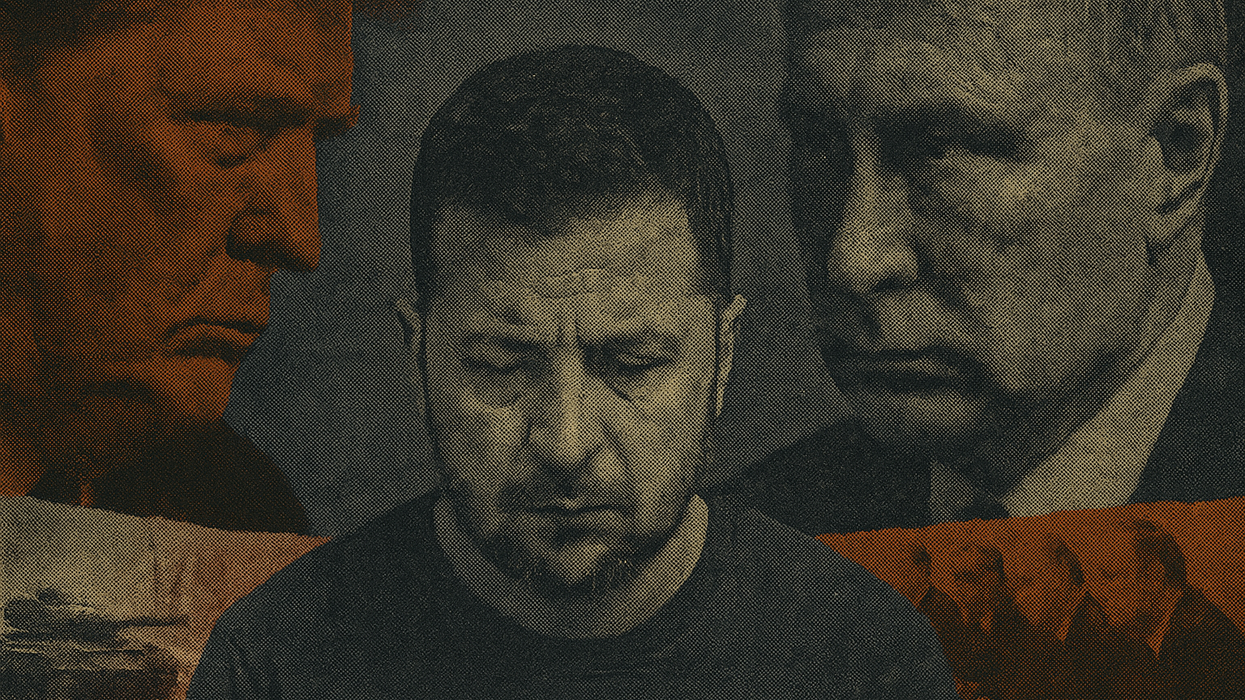Our motto at GZERO is, “Everything is political.”
Sports? You bet. See our piece earlier this year on Barcelona creating football academies in the Kurdish part of Iraq and Syria.
Food? Sure. Check out our 2022 report on the battle over where borscht was invented and learn just how heated that pot of soup can get.
Art? Duh. The author Toni Morrison said, “All good art is political.” Case in point, our coverage of a Broadway play about a measles outbreak among a community of anti-vaxxers in Berkeley, California.
But art can also be usurped by rulers and deployed as propaganda or a means of control. In ancient Rome, Augustus commissioned statues that depicted himself as eternally youthful and victorious – a pre-botox masterclass in excellent PR. On the eve of World War II, Adolf Hitler staged the notorious “Degenerate Art” exhibition to mock modernism and elevate “pure” Aryan aesthetics. And during the Cold War, Washington funded abstract expressionism – think Jackson Pollock and Mark Rothko – as a subtle weapon against Soviet socialist realism.
Now in his second term in office, US President Donald Trump has made the arts a target and a tool, putting museums, cultural institutions, and federally-funded arts programs on the defensive. Case in point: his takeover of the John F. Kennedy Center for the Performing Arts.
What’s the deal with the Kennedy Center? Since 1978, the DC-based theater has presented annual awards to artists who have contributed meaningfully to American culture. Past honorees include Diana Ross, Barbra Streisand, Andrew Lloyd Webber, and Dolly Parton – and every US president has attended the ceremony.
Until 2017, that is. Trump skipped every Kennedy Center honors program during his first term. That makes it even more intriguing that he would appoint himself chairman of the institution and handpick this year’s crop of awardees – including Sylvester Stallone, Gloria Gaynor, and the band KISS.
In February, Trump announced that his special envoy Richard Grenell would serve as executive director of the Kennedy Center, writing on Truth Social that there would be “no more drag shows or anti-American propaganda” on the schedule.
“We don’t need woke at the Kennedy Center,” Trump said.
Trump hasn’t stopped at the Kennedy Center. His attempt to rid the art world of “wokeism” has expanded to other institutions and programs. In March, the White House issued an executive order titled, “Restoring Truth and Sanity to American History,” specifically targeting the Smithsonian Institution for negative depictions of events in US history, including slavery. Instead, Trump has called for exhibits that “focus on the greatness of the achievements and progress of the American people.”
Trump has also called for an elimination of the National Endowment for the Arts (NEA) among other “woke” programs targeted in his budget proposal for fiscal year 2026.
But political battles over the arts aren’t new in the United States, either. In the late 1980s, a firestorm erupted over the NEA. Conservative lawmakers lambasted controversial works – most infamously Robert Mapplethorpe’s photographs – as obscene and unworthy of public funding.
Liberals have had their moments, too. Does anyone reading remember Tipper Gore’s crusade to get parental advisory labels onto CDs at the record store? (For that matter, are you old enough to remember record stores?)
The second act has been different. Trump sat outside the cultural arena in his first presidency, largely avoiding and skipping the arts as a policy platform. This term is decidedly different. His administration is attempting to shape culture and art by eliminating what it considers offensive or woke.
It’s a reminder that everything is political, including a night at the theater or a stroll through a museum.




